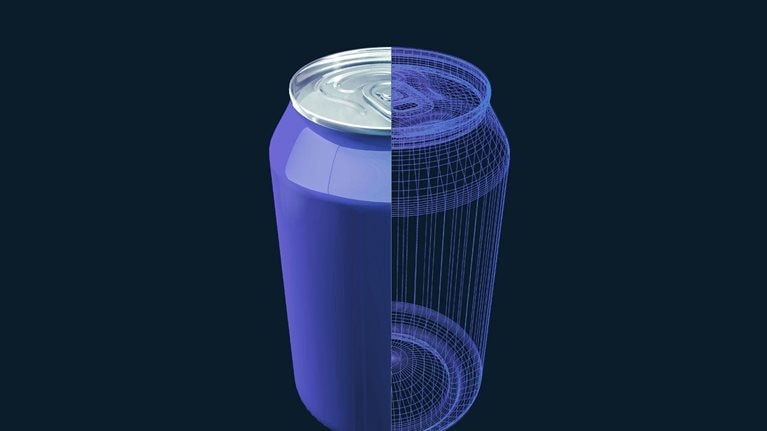New, stricter regulations on the use of certain chemicals in the packaging industry are emerging rapidly: restrictions on bisphenol A (BPA) in the European Union and perfluoroalkyl and polyfluoroalkyl substances (PFAS) in the United States being two of the most notable. With the recent release of the European Commission’s 2030 “Restrictions roadmap under the chemicals strategy for sustainability,” and state-wide petitioning for federal bans on other chemicals of concern (such as phthalates) ongoing in the United States, further regulation is looming on the horizon. Chemical-substance regulations pose significant operational challenges for industry players: uncertainty around the detail of the regulatory changes and implementation timelines can hinder an organization’s agility to address these challenges—as can limited experience within the industry on the specific chemical substances. Industry leaders are well advised to develop a proactive approach that emphasizes cross-functional collaboration underpinned by a well-developed master plan in order to confidently navigate this uncertain landscape.
Beyond environmental-packaging regulations
Of late, the packaging industry has experienced a flood of environmental regulations targeting the impact of packaging leakage. However, this is not the only agenda item for regulators: a new wave of regulations is on the horizon, which will likely usher in stricter rules around the chemical substances used in packaging. To understand more about potential upcoming changes, we have analyzed the evolving regulatory environment in the context of three chemicals: BPA, PFAS, and phthalates—all of which impact different substrates in the packaging industry. With the regulatory scope and adoption timelines still unclear, and the expected impact of such regulations rapidly evolving, packaging companies will soon be facing several logistical challenges across their operations, if they are not doing so already. In this article, we explore the upcoming changes in chemical-substance regulations, draw implications for players across all packaging substrates, and suggest a framework for industry leaders to proactively manage the uncertainty.
Significant regulatory changes on the horizon for various chemicals used in packaging
On the immediate horizon are new regulations on the usage of BPA in the European Union and the phase-out of PFAS in the United States. Moreover, there is potential for additional regulation—for instance, on phthalates—just around the corner.
BPA: New regulation expected during the second half of 2022
BPA is mainly used in combination with other chemicals to manufacture plastics and resins: notably, the transparent plastic used to make food containers, reusable beverage bottles, tableware, and storage containers can contain BPA. The chemical is also used to produce epoxy resins, which are typically employed in the packaging industry to form protective coatings and liners for metal food and beverage containers.1
Regulation around BPA is not new, but globally, regulation around the use of BPA in packaging and food-contact products has increased in recent years (see sidebar “Regulations for BPA use in packaging across the world (illustrative, not exhaustive)”). Despite a lack of regulatory infrastructure around BPA in the United States beyond specific children’s products, widespread consumer and institutional pressure has already led many companies to ban BPA from their packaging products. In the European Union, regulation of BPA has been slower. Sweden, however, banned the use of BPA for baby bottles and food-contact materials for children under three years old during 2011–16, while France prohibited it from being used in baby-food containers in 2013 and from all “food-contact materials” in 2015.
With rising concern around the health risks of significant exposure to BPA, the European Union is now accelerating regulation. In December 2021, the European Food Safety Authority (EFSA) published a revised risk assessment of BPA and then, in January 2022, a draft scientific opinion which reevaluates the tolerable daily intake (TDI) of BPA. The reevaluation proposes a significant reduction in TDI that is some 100,000 times lower than the amount previously stated by EFSA in 2015.2 With public consultation on the opinion closed in February 2022, the final regulatory verdict and adoption is expected by December 2022.3 If approved, this new regulation essentially means that BPA used in all food-contact products would need to be replaced by BPA-free alternatives across all EU member countries.
PFAS: Phase out of usage in the United States by the end of 2022, and in the European Union by 2030
PFAS are a group of chemicals used to make fluoropolymer coatings that can be heat-, oil-, grease-, and water-resistant. Within packaging, PFAS are typically used to treat paper products that serve and package greasy food, such as bakery bags and fast-food sandwich wrappers. Nicknamed the “forever chemicals,” PFAS do not break down in the environment and can migrate into food or water sources.4
Notable regulations in the United States regarding the use of PFAS in packaging date back to 2016, when the Food and Drug Administration (FDA) eliminated two long-chain perfluorinated compounds from use in food packaging.5 In 2018, the state of Washington implemented the first ban on the “intentional addition” of PFAS in food packaging in cases where safer alternatives to PFAS were available.6 However, it was not until February 2021 that Washington’s Department of Ecology published its report identifying safer alternatives.7
Following recent availability of safer options, US regulations regarding the use of PFAS in packaging has expanded rapidly, with an increasing number of regulatory bodies implementing bans on all PFAS. As of January 2022, seven states (California, Connecticut, Maine, Minnesota, New York, Vermont, and Washington) have restricted PFAS in food packaging containers and materials—most notably, the law in New York State will be the first to take effect in December 2022.8 Ten additional states have also proposed legislation banning the intentional addition of PFAS in food packaging.
In Europe, the European Commission recently launched its Restrictions Roadmap, which outlines a plan for outlawing many broad groups of harmful chemicals, including PFAS, from use in packaging by 2030.9 As part of this road map, the governments of Denmark, Germany, the Netherlands, Norway, and Sweden will formally propose a restriction on PFAS within the European Union to the European Chemicals Agency (ECHA), to be reviewed in 2023.10
Phthalates: On the horizon?
Phthalates, often called plasticizers, are chemicals used to make plastics such as polyvinyl chloride (PVC) more durable.11 They can be used in food packaging—for instance, in the lining of the lid of a jar or bottle cap—as well as in food-processing materials. In the United States, phthalates regulation has historically been limited to its use in toys and other childcare products; its use in food packaging and other food-contact products has not been a focus until recently. However, in December 2021, Maine announced a new law prohibiting the use of all phthalates in food and beverage packaging within the state.12 Enforced by the Department of Environmental Protection, this law is one of the first in the United States that would ban all phthalates in food and beverage packaging. However, while the enactment date was set for January 1, 2022,13 enforcement of the law has since been delayed until June 2022. Importantly, though, this law has gained the attention of other concerned parties, which are now calling on the FDA to frame wider, more impactful regulations to ban phthalates in food packaging and processing materials in the near future.
Impact is broad and scalable across substrates and players
Chemical coatings are used in conjunction with almost every packaging substrate: BPA with rigid plastic containers and metal cans, PFAS with flexible paper, and phthalates with soft plastics. Consequently, participants across the packaging value chain, from raw-materials producers to converters and end users, are affected by chemical-substance regulations. Several packaging end users have taken swift action to phase out, or commit to phasing out, BPA, PFAS, and phthalates, as well as other chemicals from their packaging. For example, over the past two years, many well-known retailers have implemented global chemical bans across their packaging portfolios—moves that will have a major impact on their packaging suppliers (see sidebar “A timeline of elimination of BPA, PFAS, and phthalates from company portfolios”).
Managing uncertainty from upcoming regulatory changes
While new regulations are being drafted and implemented, there can be considerable uncertainty about their precise ramifications, with clarity needed around three main questions:
- What will the regulatory scope and adoption timelines be?
- How will new regulations be implemented locally?
- What will be the exact permissible amounts of chemical exposure?
This uncertainty, combined with sometimes limited experience within the industry around substitution of specific chemicals, can hinder adoption speed. By analyzing the regulatory responses of packaging companies, we have been able to explore different approaches to managing this uncertainty. One option is to be reactive: that is, await regulatory guidance to assess the full scope and requirements set out by the regulatory authorities. However, this approach also comes with elevated risk, with organizations operating in an ambiguous environment as they await or respond to regulatory guidance. Tight deadlines for qualification of new materials or hesitancy to make portfolio substitutions could lead to loss of customers that have already implemented their own phase-outs or the advancement of rival suppliers that have been quicker to market with substance alternatives, as well as the risk of not complying with regulations if substitutions prove challenging.
Instead, we suggest that industry leaders take a more proactive approach to develop a pre-regulatory viewpoint that determines how to start substituting chemicals linked to upcoming regulation. This could be done in two ways:
- Pareto substitution of substances with direct food contact. Start substituting the lion’s share of volume linked to these substances (often the Pareto, or 80/20, rule applies) on, for example, internal coatings. In the case of BPA, substituting internal coatings that contain BPA with BPA-free alternatives mitigates a significant proportion of the risk to food content. This is because internal coatings with BPA have five times the migration risk compared to external coatings given their direct contact with food.
- Proactive full ban. Start implementing a full ban on the substance—both for internal and external coatings—as sometimes the substitution challenges are trickier for external coatings given limited industry experience.
To get started on this journey, packaging players are well advised to rapidly implement a master plan that includes the following building blocks as a minimum:
- Data/IT. Ensure full transparency around all substances used in the packaging by developing a clear perspective on substances in the organization’s own production processes while also requiring similar transparency from suppliers. Ideally, as part of this plan, introduce future-proof traceability of substances (if not yet in place); this will enable additional transitions down the road as further regulation can be expected over the years.
- R&D/production. Map sources of substances within regulatory scope in the production chain and create a list of suitable alternatives. In some cases, these alternatives might have already been qualified for use in specific plants or for specific customers.
- Operations. Develop a qualification plan and expected timelines for the transition of the substances in scope, often in collaboration with R&D and production. This qualification effort may prove complex—hence the requirement to free up additional qualification and testing capacity in plants to ensure compliance with regulatory timelines.
- Procurement. Develop an updated sourcing plan and launch new requests for proposal. Ensure that procurement can support operations in developing an R&D and customer-qualification plan. Organizations may also want to consider how to leverage the substitution process to streamline SKU counts—this will help boost operational efficiency and potentially offer better buying conditions.
- Commercial. Map those customers impacted by regulations and develop a customer narrative to support a transition plan. Linked to this, negotiate with customers regarding price changes and the (customer-specific) qualification and testing timeline, if required.
- Legal. The legal team will need to be primed to follow up and advise on regulatory changes as they develop.
Given that substituting substances touches upon multiple functions within the organization, developing a master plan will require a cross-functional team to develop and coordinate it. As part of this activity, it will be critical to implement clear performance-management parameters (such as KPIs and milestones) because tracking will be key.
Any regulatory changes will have very significant implications for a packaging company’s product portfolio. Taking a reactive “wait and see” approach can put large volumes at risk. Conversely, being proactive by developing an early position and taking action based on a clear master plan and cross-functional collaboration can help packaging players navigate the complexities of the evolving regulatory landscape.


